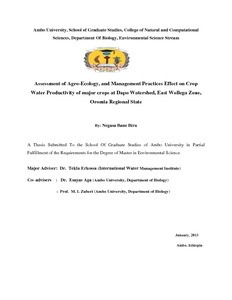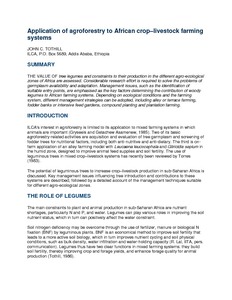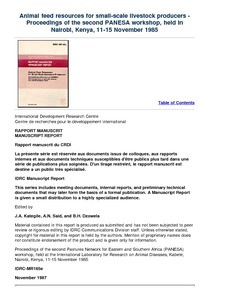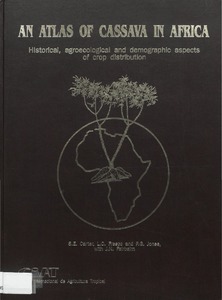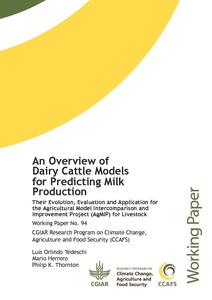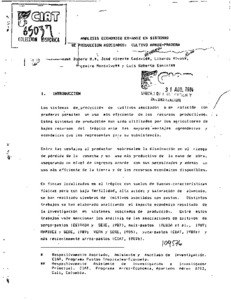système d'exploitation agricole
AGROVOC URI:
Atlas de Yorito y Sulaco, Yoro (Honduras)
Assessment of agro-ecology, and management practices effect on crop water productivity of major crops at Dapo Watershed, East Wollega Zone, Oromia Regional State
In Ethiopia food production lags behind while population growth increase, poor management of Soil and Water, poor agronomic practices and environmental degradation are wide spread. In the study area, agriculture depends on rain water; however rain water is not evenly distributed spatially and temporally. The general objective of the study is to assess agro-ecology, and crop management practices effect on crop water productivity of major crops.
Application of agroforestry to African crop-livestock farming systems
Discusses the potential of leguminous trees to increase crop-livestock production in sub-Saharan Africa. Describes major management issues influencing tree introduction and contributions to the system. Gives a detailed account of the management techniques suitable for different agro-ecological zones.
Animal feed resources for small-scale livestock producers. Proceedings of the second PANESA workshop
Presents papers on inventory of animal feed resources in Kenya, Tanzania, Ethiopia, Zimbabwe, Malawi, Burundi, Madagascar, Botswana, Swaziland and Mozambique, research and development experiences in Kenya, Tanzania, Burundi and Zimbabwe; socioeconomic aspects of feed resources; and regional/sub-regional research programmes.
Animal genetics training resources: Capacity building for sustainable use of animal genetic resources in developing countries
This training resource is presented in five modules. 1) Global perspectives on animal genetic resources for sustainable agriculture and food production in the tropics. This module provides some insight into the need for better use of animal genetic resources (AnGR) in the context of projected demand for food in developing countries until 2020. 2) Improving our knowledge of tropical indigenous animal genetic resources.
Animal production systems in south-east and east Asia. Potential and challenges for research
Animal production systems in South-East and east Asia are discussed in the context of their potential and challenges for research to address poverty alleviation, increased food production and food security and environmentally sustainable development. The projected human population increase, rising incomes and changing consumer preferences will accelerate the demand for, and access to food in the future. This will place considerable pressures on the use of natural resources (land, crops and animals).
An Overview of Dairy Cattle Models for Predicting Milk Production: Their Evolution, Evaluation, and Application for the Agricultural Model Intercomparison and Improvement Project (AgMIP) for Livestock.
The contemporary concern about anthropogenic release of greenhouse gas (GHG) into the
environment and the contribution of livestock to this phenomenon have sparked animal
scientists’ interest in predicting methane (CH4) emissions by ruminants. Focusing on milk
production, we address six basic nutrition models or feeding standards (mostly empirical
systems) and five complex nutrition models (mostly mechanistic systems), describe their key
characteristics, and highlight their similarities and differences. Four models were selected to
Análisis económico ex-ante en sistemas de producción asociados: cultivo arroz-pradera
Analysis of smallholder farmer’s participation in production and marketing of export potential crops: The case of sesame in Diga district, east Wollega zone of Oromia Regional State
Agriculture in Ethiopia remains to be the key sector. It is still the main source of foreign exchange earnings (up to 90%) and the largest labour force employer (about 83%). Of the total agricultural output, about 95% was covered by smallholder agriculture sub-sector. However, a number of factors limit smallholder farmers from participating in export potential cash crops. The main objective of this paper is to identify household specific factors determining sesame production and marketing participation.


